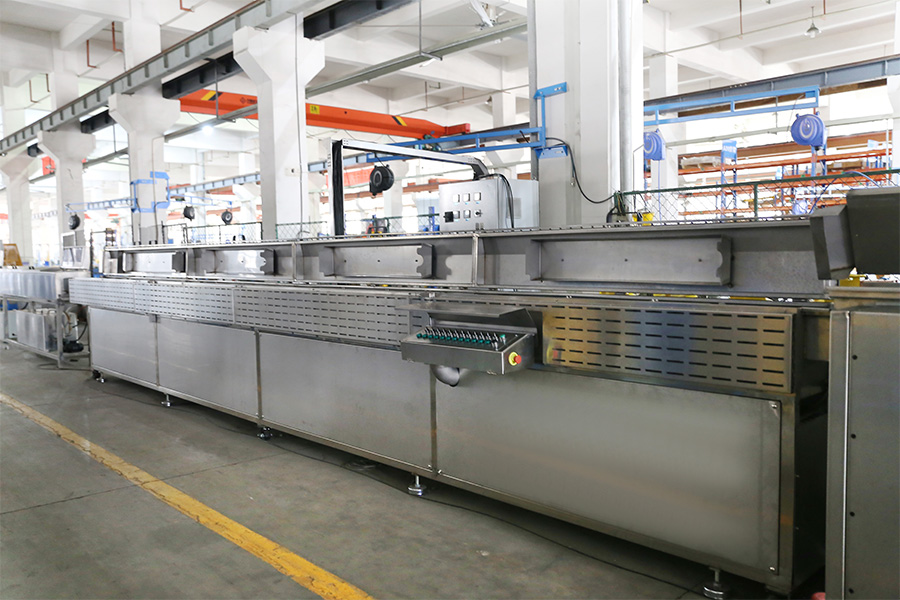Notes on the Use and Operation of Salt Bath Curing Line
Salt baths are preferred for curing because they provide uniform temperature distribution, reducing the chances of uneven curing or thermal degradation that can occur with traditional curing methods. Furthermore, salt is a relatively cost-effective medium and can be used repeatedly, contributing to an efficient production process.

Key Components of a Salt Bath Curing Line
A typical salt bath curing line consists of several components that work together to ensure a smooth and effective curing process:
Salt Bath Tank: The primary component of the curing line, the salt bath tank holds the molten salt, which is typically a mixture of sodium nitrate, potassium nitrate, or other salt compounds. The tank is heated to the required curing temperature, typically ranging from 200°C to 300°C, depending on the material being processed.
Heating System: This system is responsible for raising the temperature of the salt bath. It may use electrical heating elements or other methods, such as gas or oil burners, to maintain a constant temperature. Precision is essential, as even slight fluctuations in temperature can affect the quality of the curing process.
Conveyor System: In continuous salt bath curing lines, the material to be cured is fed through the salt bath tank using a conveyor system. The conveyor ensures a constant, uninterrupted flow of products through the curing process, maintaining consistency in curing time and temperature.
Cooling Zone: After the material exits the salt bath, it needs to be cooled to prevent further curing and maintain its shape. The cooling zone may include air or water cooling systems that rapidly reduce the temperature of the cured material.
Control System: A sophisticated control system monitors and regulates the temperature, salt composition, and speed of the conveyor. It ensures that the curing process stays within specified parameters and that any deviations are promptly addressed.
Filtration System: Since the salt bath is used repeatedly, contaminants and by-products can accumulate over time. Filtration systems help maintain the purity of the salt bath, ensuring that the material remains uncontaminated and the curing process stays efficient.
How to Operate a Salt Bath Curing Line
Operating a salt bath curing line involves several important steps, from loading the material to the cooling phase. Here are the key stages involved in the process:
Preparation: Before starting the curing process, ensure that the salt bath is clean and the salt is at the correct temperature. The material being processed should be free of dirt, dust, and moisture to prevent contamination. If needed, the salt composition should be checked and adjusted to ensure curing conditions.
Loading: The rubber or material to be cured is loaded onto the conveyor system. In a continuous system, the products move steadily through the salt bath, ensuring consistent exposure to the heat. In batch systems, items are dipped into the salt bath and then removed after the designated curing time.
Curing: As the material enters the salt bath, the heat from the molten salt initiates the curing reaction. The curing time depends on several factors, such as the type of material, the thickness of the product, and the desired properties. A typical curing cycle may last anywhere from a few minutes to over an hour.
Cooling: After curing, the material must be cooled to stop the cross-linking process. The cooling zone must be properly adjusted to avoid thermal shock or distortion. Rapid cooling can prevent over-curing and ensure that the final product meets the desired specifications.
Post-Processing: Once cooled, the cured material may undergo further treatments such as trimming, finishing, or inspection. Any excess salt on the surface of the cured material should be removed to prevent damage or contamination.






 English
English 中文简体
中文简体 русский
русский



